We’ve all heard it a million times: “There aren’t enough hours in the day.” Time management has long been heralded as the solution to our increasingly busy lives. But what if the real challenge isn’t managing our minutes and hours? What if the key lies in reframing our perspective, shifting from a narrow focus on time to a holistic approach that encompasses all our resources? Join us as we explore the overlooked dimensions of productivity and unveil strategies that extend beyond the confines of a ticking clock. Dive deep into understanding the real resources you should be managing, and discover how a comprehensive approach can lead to a more balanced, fulfilled life. Welcome to a new era of resource mastery. 🕰️➡️💡
About the Author
In her previous career as a university-level writing instructor, Dr. Stephanie Weaver taught hundreds of first-year college students not just about citations and sentence structure but also about how writing gets done. She’s passionate about helping people find the writing practices and strategies that work for them to accomplish their writing goals.
Managing Emotions: Procrastination and Conversations We Have with Ourselves
Back in 2019, I read an article about some of the recent research on procrastination that completely changed my relationship with myself.
For a long time, whenever I thought about procrastination, I thought of it as a problem of willpower or self-discipline – that I put off doing the things I knew I needed to do because I was lazy or weak. You may have had the same thoughts about yourself.
What this article explained, however, was that procrastination is not a time management problem. It’s an emotional regulation problem.
Think about it like this: I need to write a monthly newsletter to send out to my clients or donors or whoever. The newsletter needs to be sent out in a week. But as I sit down to write the newsletter, I start thinking about how nobody probably cares about my dumb newsletter anyway, and I struggle to come up with anything interesting to say. So I tell myself that I’ll just let ideas percolate for a day, then I’ll come back to it.
The next day, I see “write newsletter” on my to-do list. I haven’t had any amazing ideas, so I go on to do the other, easier tasks – even the ones that aren’t as time-sensitive as the newsletter – and the next thing I know, it’s the end of the work day. “Tomorrow,” I tell myself, putting a big star next to the newsletter task.
The next day, I see the newsletter task. I groan. I know I should have taken care of this yesterday. Just seeing the item on the list makes me feel some kind of negative emotion (dread, anxiety, anger at Yesterday Stephanie for not doing the thing). I can’t handle that negative emotion right now. Instead I work on some nice, low-stakes copy-editing.
This keeps going on until I’m at the deadline – the negative emotion from repeatedly not doing the thing has built up into a whole barrier, and now I’m angry and frustrated and pounding out words that I know aren’t very good, and even after the task is accomplished, I don’t feel good about it.
Then the next time writing the monthly newsletter comes up, I start with those same negative emotions from last time…
We start the procrastination process for a variety of reasons – because a task is boring or hard or because we think we will fail or because some other thing is shiny and exciting and fun – but the negative emotion building up around a task is what perpetuates the procrastination cycle. The ways that we’ve been taught to think about procrastination – as a lack of willpower or self-discipline – only compound those negative emotions and don’t actually solve the procrastination problem.
A better way to deal with procrastination begins with acknowledging the emotional component of everything we do so that we can address the root causes of procrastination. Here’s some steps that I’ve started taking to deal with procrastination.
1. Articulate why you want to avoid a task. When I notice myself avoiding a task, I take some time to identify exactly why I don’t want to do that task. Sometimes the answer is easy. Maybe I’m putting off starting on a federal grant because I’ve never written a federal grant before and the list of requirements is long and confusing and I don’t even know where to get started so I just don’t start. Sometimes the answer is more complicated. I routinely procrastinate on putting away laundry because it involves asking my partner to help which makes me feel like a nag and a killjoy. The rational part of my brain knows that asking my partner to take care of his clothes is a reasonable request, but I still carry those negative emotions. It doesn’t help that I find putting laundry away incredibly boring, so the emotional obstacle to doing that task is pretty high.
2. Give yourself a pep talk. Sometimes just articulating why you’re avoiding a task is enough to overcome the emotional obstacle (because sometimes those reasons can sound really silly once you put them into words). Sometimes, you may need a pep talk. Remind yourself of past times when you’ve overcome similar challenges, like how, once upon a time, you didn’t know how to write any kind of grant, so a federal grant is just another step on your learning journey. I actually have to remind myself that I’ve asked my partner to help with the laundry hundreds of times and he has always said yes.
3. Be kind to yourself. A big component of that pep talk is forgiving yourself for procrastinating. You have to address the negative emotions that may have built up around the task before you can move forward. Acknowledge that your fears, however reasonable they may or may not be, felt very real, and let go of any anger that may have accumulated. Gently correct any negative self-talk that pops up while you’re working on the task.
4. Set a timer. Addressing the emotional obstacles to a task can set the stage for a new beginning, but it doesn’t actually get the task done, and it doesn’t necessarily make the task any easier. Additionally, addressing the emotional stuff can become another procrastination tactic. So, as soon as you’ve gotten through the previous steps, work on the task. What I like to do is set a time for 25-30 minutes and tell myself that I only have to work on this task until time is up. After that, if it’s absolutely horrible and I hate it, I can quit. What I usually find, though, is that overcoming that initial friction of getting started is enough to keep me moving forward. Even if I don’t finish the task that day, I find it much easier to go back to something that’s in progress.
5. Create a positive emotional experience. Too often, when we finish a task we’ve procrastinated on, we’re scolding ourselves even after we pass the finish line, but we all know that positive reinforcement is a much better motivator than negative reinforcement. If the problem of procrastination begins with negative emotional associations, one way to counteract it is to create positive emotional experiences. This doesn’t have to be a big Treat Yo’self kind of thing. Just taking a minute to congratulate yourself on overcoming the challenge of getting started might be enough. Take a two minute dance party break. Draw a little doodle person saying, “Good Job!” I’m constantly making my partner give me high-fives when I finish small tasks that I didn’t want to do because that social validation gives me a little boost of serotonin.
The truth is that I still procrastinate sometimes. After all, there’s only so many hours in a day and I only have so much energy and willpower for getting things done. Sometimes those items that just never seem to get marked off the to-do list just don’t actually matter that much, and it’s okay to write them off as not being a priority.
But these steps have helped me understand why I don’t do things that are a priority for me, and I feel like I have a much healthier relationship with myself and my work.

Dive into our “Write Your Grant in One Hour Using AI” course. It’s packed with video tutorials, a digital workbook, and a cheatsheet to guide you through the AI-driven grant writing process. 🎓
Don’t miss out on this chance to stay at the forefront of grant writing and harness the power of AI to enhance your grant writing process.






